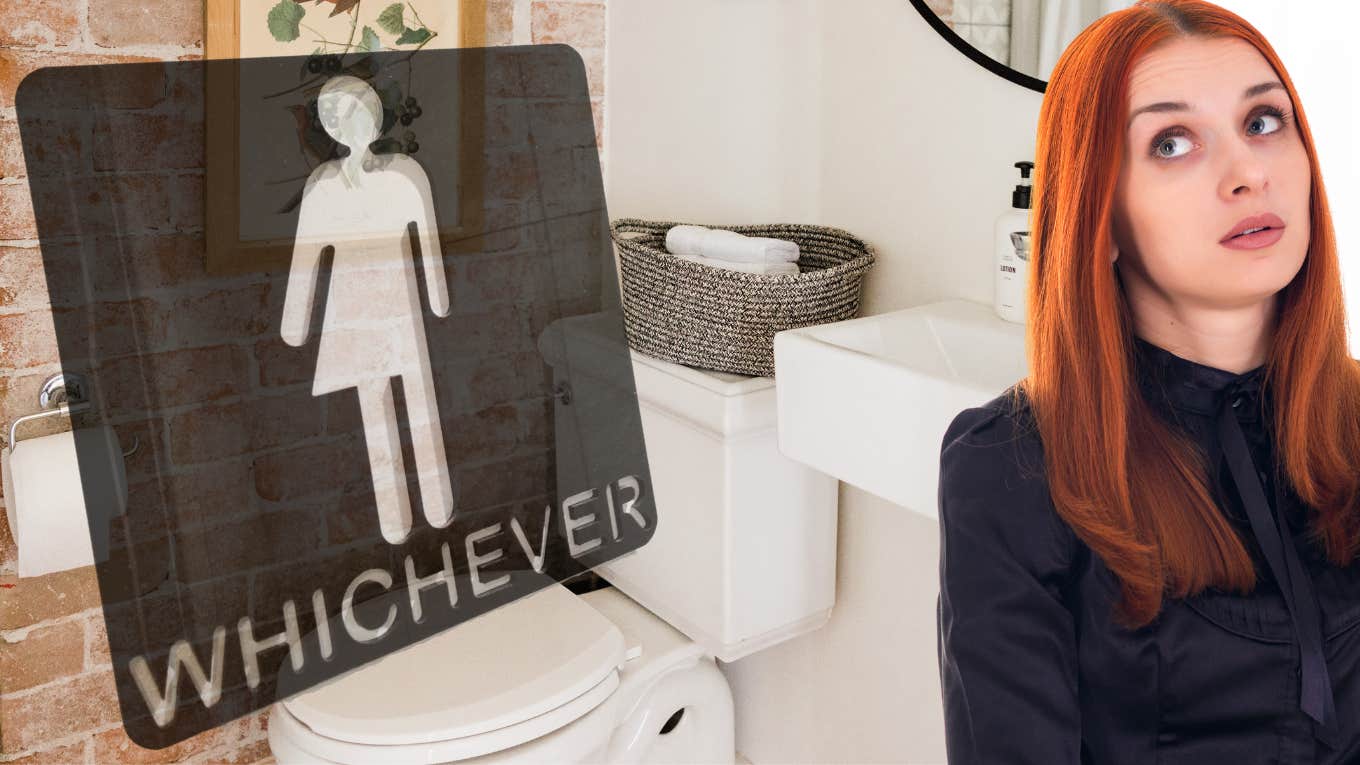Woman Shares How Worried Parents Can Explain Gender-Neutral Bathrooms To Their Children — 'Seems Pretty Easy To Me'
Gender identity can be very nuanced, but it doesn't have to be as complicated as some people make it out to be.
 Susannah Townsend, Flashromance, georgeclerk | Canva
Susannah Townsend, Flashromance, georgeclerk | Canva In just 10 seconds, a woman named Ashley was able to dismantle the argument that explaining what an “all-gender” bathroom is to a 10-year-old is some kind of herculean task. The original post, made by a Republican woman named Ashley Martin, begs the question “is this the reality we have to raise our kids in?”
But the reality, according to this mom, is a simple one to explain to her kids.
She compares gender-neutral bathrooms to family bathrooms like they have at home.
“So, is this what we're having to raise our kids now in? That we have to tell them at 10 years old what an all-gender bathroom is?” Martin asks before Ashley stitches her take on the matter.
“‘Hey, boys, do you see that bathroom over there? You know how we all use the same one at home? It's like that,’” she explained as if she were talking to her kids. “I don't know, that seemed pretty [expletive] easy to me.”
The reality is that we’ve all lived with and had gender-neutral bathrooms in our own homes growing up.
It’s a fairly simple concept — no matter what your gender appearance or biological sex, you likely use the same bathroom at home — so where’s the confusion?
Well, the confusion is manufactured. Gender identity has become a polarizing political view, meaning that some members of the right have co-opted the opposition to gender inclusivity. In an attempt to make the topic sound like something that’s too confusing or too much of a hassle to teach, they do things like Martin did. They treat it like some foreign concept that doesn’t feel natural when the truth is that having gender-neutral bathrooms is no mystery. We use one every single day, and many people in the comments vouched for the method Ashley shared.
“Of all the conversations I've had with my kids. This was the easiest. Their response: ‘Oh. Ok.’ And life moved on,” one commenter shared. “My nephew is more confused [about] why he can’t come with me into the women’s bathroom when his default is all-gender/family bathroom,” someone else shared, showing that it might even be more confusing to explain why they’ve been separated in public.
Explaining gender to kids can be difficult and should be done with love and care.
First and foremost, parents need to reassess their own assumptions about gender and sex — understanding the differences between the two and reading up on what it means to be transgender and how to operate under the pretense of inclusivity.
Gender identity is all about people figuring themselves out, so it’s important to help people feel comfortable in their own skin and not discriminate against them for the person they want to be.
Cameron Van Fossen, executive director of Gender Spectrum, an organization dedicated to the well-being of gender-expansive children, spoke with TIME about what it might look like for parents whose kids are figuring things out.
“For most kids, experimenting with gender will be just that — exploration and play. For some kids, though, it may feel more intense,” Van Fossen explains to TIME.
As such, this is where it becomes important for parents to “de-center” themselves from their own ideas and views. Your kids’ identity is a reflection of themselves, not a reflection of you.
“It is not an attack on you, your values, or your worldview,” Van Fossen adds.
This would also be the time to re-evaluate your personal biases. Van Fossen suggests that parents ask themselves these questions: “How do you feel about boys who wear nail polish and girls who want to shop in the boy’s department for clothes? What messages about gender expression were you given as a child?”
Treating these moments with love and care goes a long way with kids. According to the Trevor Project, LGBTQ youth who came from families that provided a high amount of social support reported attempting suicide at less than half the rate of those who did not. Less than a third of non-binary and transgender youth found their home to be gender-affirming.
Instead of spreading beliefs that could prove harmful to vulnerable groups, realizing that everyone has their differences could go a long way in minimizing the negative impact.
Isaac Serna-Diez is an Assistant Editor for YourTango who focuses on entertainment and news, social justice, and politics.
